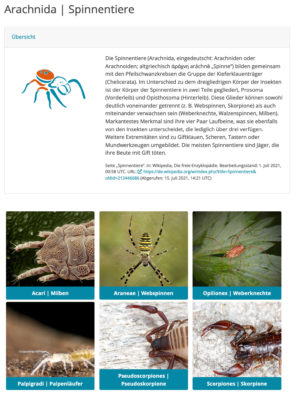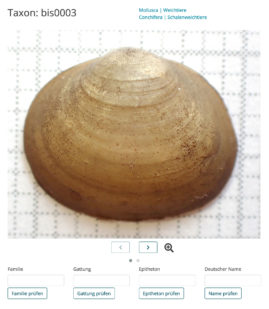Digital
solutions for
research & teaching
DigiTiB: Digital
animal identification.

DIGITAL
TRANSFORMATION.
The digital transformation has also found its way into teaching at schools and universities. Recent events such as the Corona pandemic have accelerated this shift towards the use of digital solutions and confirmed it as a necessary didactic tool.
In cooperation with the University of Greifswald, the TU Darmstadt and the Digital Natural History Archive Darmstadt e. V. (DiNArDa), psbrands has developed the zoological online learning platform DigiTib (www.digitib.de), which can be used as a digital learning tool to support the teaching of species knowledge.
Launched in 2021, the portal is supported by more than 20 European universities so far and used in school and scientific teaching.

3D MODELS.
Numerous species are also presented as interactive 3D models.
A special 3D scanner distributed by Small World Vision GmbH generates high-resolution photos of the taxa and creates 3D models from them. These are then presented in the DigiTib portal via an online 3D viewer developed by psbrands.
Important features of the viewer are rotation and zoom functions, surface and volume measurement as well as individual marker-based length measurement. In the output, surface textures can be adjusted, and the lighting can be changed.
By coupling the viewer with CMS TYPO3, the models are configured in terms of position and zoom factor. Hotspots are dynamically rendered into the 3D model to present further information such as images, texts and videos. For a detailed view of the species, the corresponding real image from the 3D model is displayed greatly enlarged. The object can be viewed in its entirety and morphologically recorded without the corresponding individual being under the stereomicroscope.
SPECIES
KNOWLEDGE.
For digital identification exercises, lecturers can compile individual species in a shopping basket, save them and make them available to the course participants as an online link.
The determination of the taxa can be queried on different systematic levels. After entering the solution, an immediate success control takes place, including further description.
Data management.
Technologically, the digital learning portal is based on the web enterprise CMS TYPO3, which is ideally suited for the implementation of complex, extensive web applications.
Data enrichment in the system is done manually via role- and rights-based access by various project partners and via various automated imports.
The output of all taxon-relevant data is category-controlled.
The 3D viewer correlates with a TYPO3 extension programmed by psbrands, which allows further configuration and enrichment of the 3D data provided.
The extensive course planner enables teachers to save individual identification exercises and make them available to pupils and students for lessons at school and university.
You want to see more?

You have questions?
Contact us, we will be happy to help you.
Your contact person:
Dr. Heiko Metzner
Account Manager






